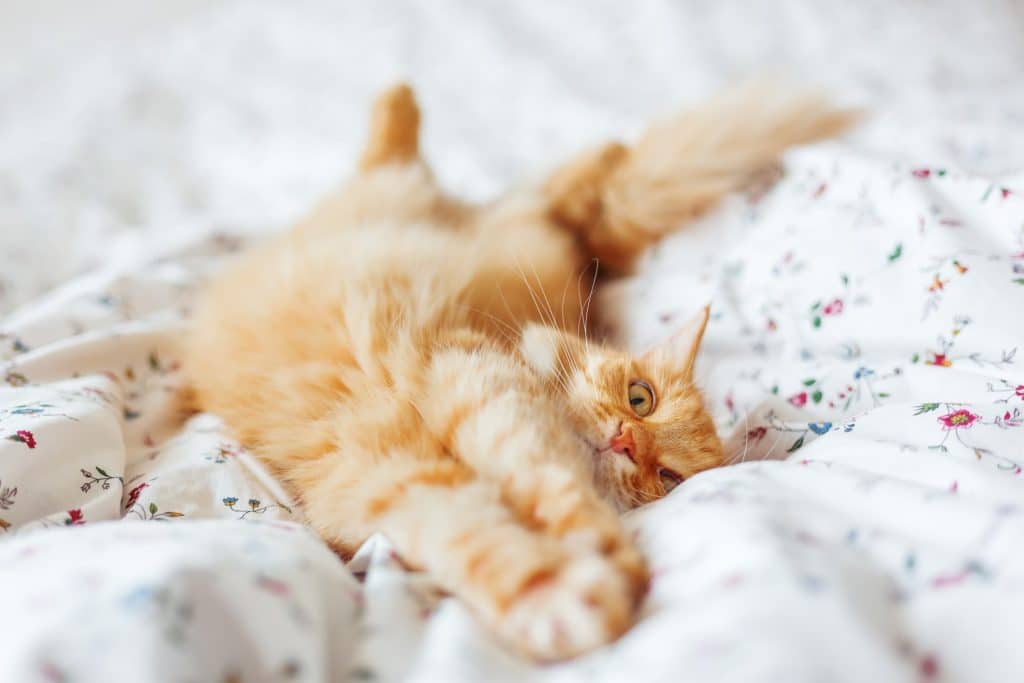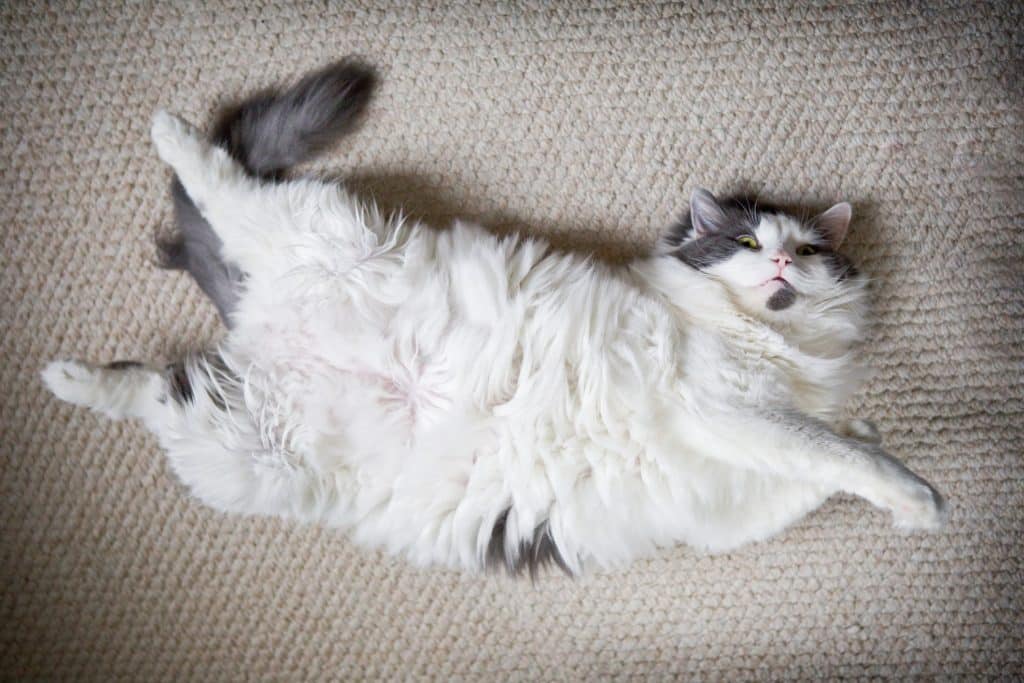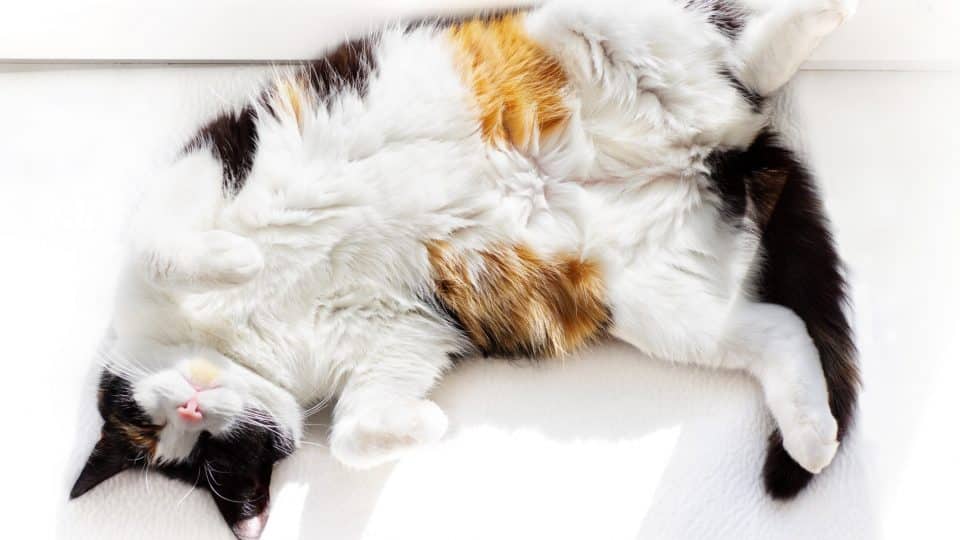When tickling your cat’s tummy, pondering their primordial pouch, you might find yourself wondering if they have a belly button like us and how to find it.
Yes, cats have belly buttons. Like us, cats have one belly button that served as the connection point of the umbilical cord to their mum in the womb. But unlike us, a cat’s belly button is a little more difficult to find. This is partly because cats don’t have the typical ‘innies’ or ‘outies’ we’re familiar with.
Here’s everything and more that you’ve ever wondered about your cat’s belly button. Plus, look out for these signs that something is amiss.
Where Is My Cat’s Belly Button?
It’s not easy to spot a cat’s belly button. Your cat’s fur can make it hard to find, but that’s not all. “It just looks and feels like a scar or bump,” says Dr. Sehaj Grewal, DVM at The Melrose Vet, making it easy to miss.
A cat’s belly button is about a half centimetre in diameter, located on the underbelly just below the last rib. You might spot a cowlick of fur around the small, white scar. Typically, you can touch and feel the raised edges of the scar. If you don’t, chances are the scar could be covered by fur or in the same location as the spay scar. If your cat is a senior kitty, their scar might have healed so much that you can’t feel it.

iStock/Konstantin Aksenov
Are Cats Belly Buttons Similar To Humans?
Like humans, cats have one belly button. This is the same for all mammals like horses, sheep, and dogs. A cat’s belly button serves a similar function to a human’s, and they’re both located on the belly. But a cat’s belly button doesn’t look anything like a human’s.
A cat’s belly button doesn’t collect lint like ours either. That’s because, unlike a person’s, a cat’s belly button does not have an “opening or recession,” Dr. Grewal adds. Simply put, cats’ belly buttons aren’t innies or outies. They are a small, flat scar.
What Forms A Cat Belly Button?
Like human babies, the belly button of a cat is the leftover scar where the umbilical cord attached mum to her kitten. Through this connection, the cat mum delivers to the growing kitten vital nutrients and oxygen, and removes waste. Once born, the cord separates from the placenta, dries up, and falls off. What remains is a small, raised scar.
While the process is similar in humans, we cut the umbilical cord and clamp the remaining stump. The stump falls off after a few weeks, leaving behind a healed belly button. Doctors say it’s not true that the way your cord was cut and clamped determines the shape, contrary to popular belief.
So, why do humans have innies and cats don’t? Scientists, veterinarians, and doctors aren’t really sure, but it might come down to the progressive healing of a cat’s umbilical cord scar, the thickness of the skin, or how the umbilical cord was attached.
Are There Any Health Complications Associated With A Cat’s Belly Button?
If the area around the umbilical cord is red, dark, or irritated, your kitten could have an infection of the skin or blood. They should see a vet immediately. If it feels like your kitten has an outie belly button, they might have a kitten umbilical hernia.
“An umbilical hernia is a condition where the umbilicus [belly button] has not closed,” Dr. Grewal explains. Abdominal contents like fat and intestines can protrude into the layer of skin where the belly button should be. You won’t see contents in the open air outside of the body, though. According to the Thomasville Veterinary Hospital, these contents may be visible like a soft swelling, bulge, or squishy protrusion under the skin.
Umbilical hernias are the most common type of hernia in kittens and are especially common among orphaned foster kittens. It’s necessary to stimulate kittens that are bottle-fed, but too much handling of the tummy could disrupt the healing belly button. Vets still don’t fully understand the natural causes of kitten umbilical hernias.
Umbilical hernias typically don’t cause any medical issues, and your vet might recommend waiting for the small umbilical hernia to heal on its own. Larger or more severe protrusions, however, may need surgery.

iStock/sdominick
Takeaway
Belly buttons result from a connection between a kitten and a mother. The process of birthing kittens can be risky for the mum and her little ones. Birth defects in kittens like umbilical hernias aren’t fully understood, are difficult to predict, and can be tricky to treat. All newborn kittens (and other pets) should visit the vet as soon as it’s safe for them to travel for a complete examination. Some birth defects, like a heart murmur, can’t be diagnosed without an examination.
Spaying and neutering cats before they reach sexual maturity is the only way to guarantee the prevention of birth defects in kittens—especially for those that might be born outdoors and without proper care.
Pure breed cats can be more susceptible to birth defects due to the small genetic pool. Some cats, like the Devon Rex with curly hair and the Scottish Fold with unique ears, are bred for their birth defects. But every cat, like the rare all-white cat, can be born with defects due to happenstance, unlucky genetics, or malnutrition of mum when in the womb.



